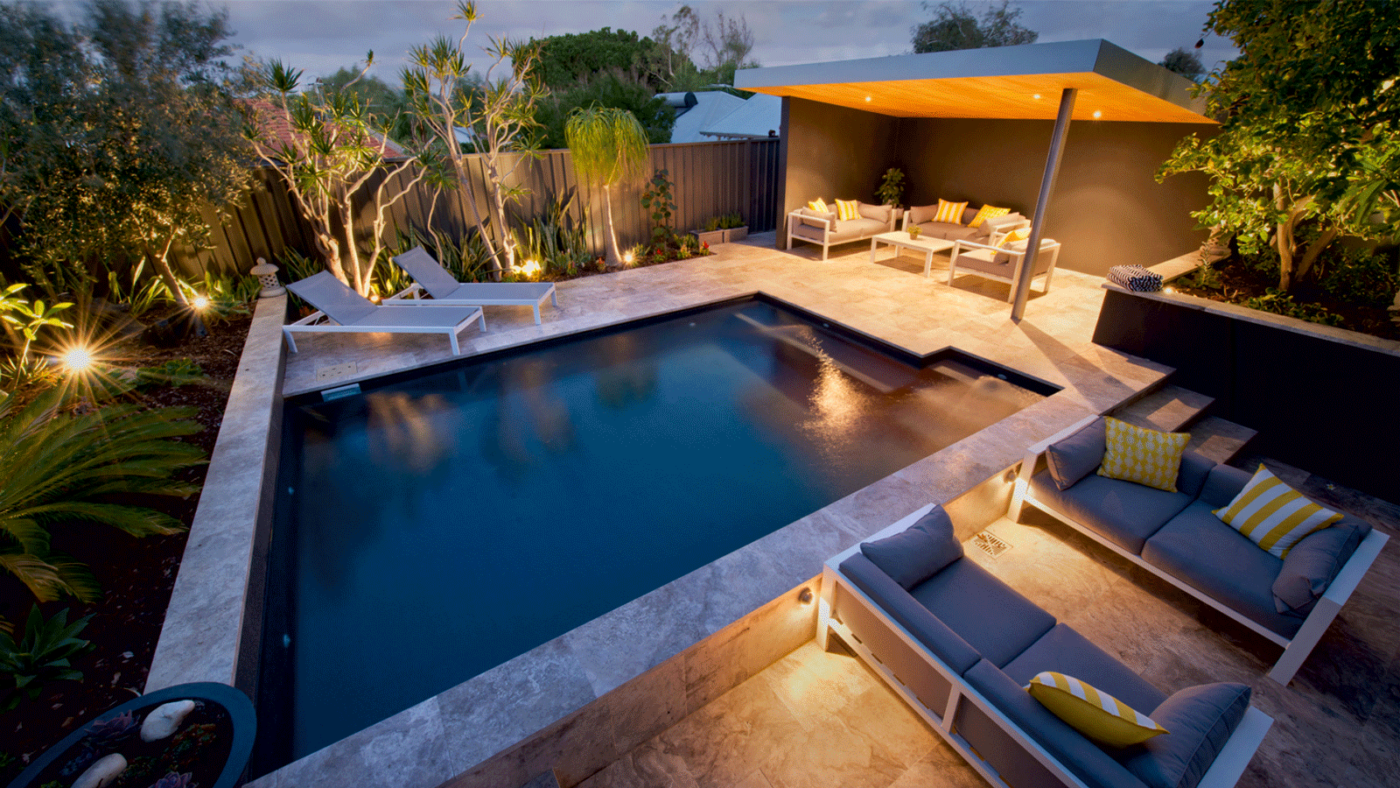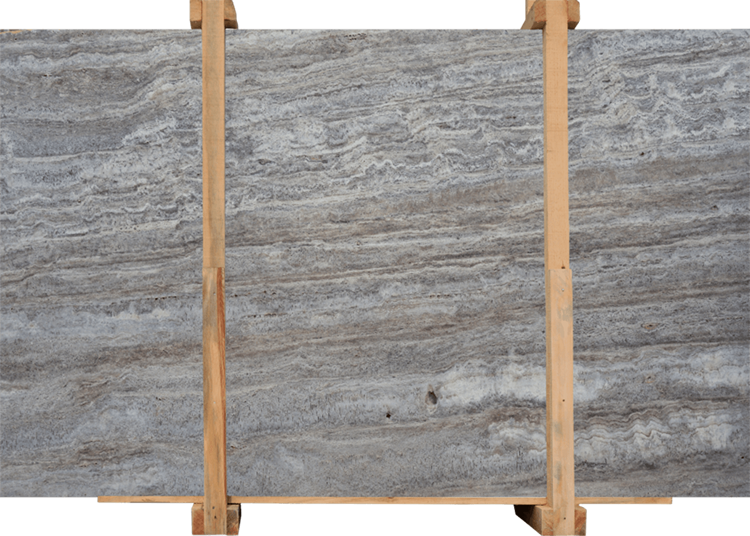Travertine stone offers a unique, natural beauty that enhances outdoor spaces. This sedimentary rock forms from calcium carbonate deposits around mineral springs, resulting in a fibrous appearance with distinct characteristics.
The use of sustainable materials in landscaping is crucial for eco-conscious homeowners. Travertine stands out as an eco-friendly option, providing durability and aesthetic appeal without compromising environmental integrity.
Its versatility allows you to create various garden designs. Whether you aim for a rustic pathway or elegant pool coping, travertine can seamlessly blend with nature, adding warmth and texture to your surroundings.
Consider incorporating travertine into your outdoor projects to elevate both the beauty and sustainability of your garden.
Understanding Travertine: A Closer Look at the Natural Stone
Travertine is a unique form of natural stone primarily formed from calcium carbonate deposits. This process begins in mineral springs, particularly hot springs, where groundwater rich in dissolved carbon dioxide interacts with calcium carbonate-containing rock. As the carbon dioxide escapes, travertine is deposited in fibrous or concentric layers, creating its distinct appearance.
Key Characteristics of Travertine
Among the key characteristics that set travertine apart are the unique properties of travertine:
- Porosity: Varying from 10% to 70%, this characteristic allows for excellent drainage, making it ideal for outdoor applications.
- Color Variations: Ranging from white to brown and yellow, these hues result from impurities within the stone and offer a striking palette for landscaping.
The Charm of Travertine
The charm of travertine enhances outdoor spaces by providing a natural look that blends seamlessly with the environment. Its durability ensures longevity, while its unique properties allow for creative design solutions. Travertine’s aesthetic appeal and versatility make it a popular choice in modern landscaping and architecture, echoing its historical significance in ancient Roman structures.

Exploring Different Finishes for Travertine Stones
Travertine stone is available in several types of finishes, each offering unique aesthetics and practical benefits. Understanding the characteristics of travertine is essential to choosing the right finish for your project. Here are the most common options:
- Polished finish: This smooth finish enhances the natural beauty of travertine and is ideal for residential interiors.
- Honed finish: With a matte appearance, honed travertine is perfect for high-traffic areas due to its durability and slip resistance.
- Tumbled finish: This rustic option highlights the natural texture of travertine and is often used in outdoor spaces.
These finishes showcase the versatility of travertine in construction, making it suitable for various applications such as flooring, countertops and wall cladding. In addition, understanding the formation of travertine can help you appreciate its unique characteristics and uses in different architectural styles.

Transform Your Garden Paths with Travertine Pavers
Creating beautiful garden paths with travertine pavers not only enhances the beauty of your outdoor space, but also blends perfectly with nature. The earthy colors and textures of travertine bring a rustic charm, making it a great choice for anyone looking to enhance their landscape. One of the most common uses of travertine is to create stylish walkways that blend in with nearby plants and flowers.
Design Inspiration for Garden Paths
Here are some design ideas to inspire you:
- Winding Walkways: Use travertine pavers to form winding paths that mimic natural trails, guiding visitors through lush gardens.
- Geometric Patterns: Arrange pavers in geometric patterns for a modern touch, adding visual interest to traditional landscapes.
- Mixed Materials: Combine travertine with gravel or ground cover plants for a unique blend that enhances drainage and reduces erosion.
Benefits of Travertine for Outdoor Walkways
Here are some reasons why travertine is an excellent choice for outdoor walkways:
- Durability: Travertine is a durable stone tile that withstands foot traffic and weather conditions.
- Slip Resistance: The textured surface of certain finishes provides excellent slip resistance, ensuring safety in wet conditions.
- Low Maintenance: With proper sealing, travertine requires minimal maintenance while retaining its natural beauty.
Incorporating travertine pavers into your garden design not only elevates the aesthetic appeal but also promotes functionality and safety in outdoor spaces.
2. Elevating Pool Areas with Travertine Coping Stones
Travertine coping provides a natural and elegant finish to pool areas, greatly enhancing their aesthetic appeal. The unique textures and colors found in travertine create a stunning visual that complements any landscape design.
Key benefits of using travertine coping include:
- Durability: Travertine is known for its robust nature, making it suitable for high-traffic areas like poolside.
- Slip Resistance: Its textured surface ensures safety, minimizing the risk of slipping when wet.
- Customization: Available in various colors and styles, travertine coping tiles can seamlessly match your pool design, creating a cohesive look throughout your outdoor space.
The role of the pool coping goes beyond just looking good; it’s also an important safety feature that prevents water from overflowing. This protects nearby structures and keeps everything looking neat. Using travertine coping can transform ordinary pool areas into luxurious retreats. The natural beauty of travertine creates a soothing atmosphere, perfect for relaxing in your outdoor space. The unique qualities of each tile add character to your landscape while being practical and durable.

Enhance Your Outdoor Spaces with Travertine Cladding Tiles
Transform your garden walls or feature walls into stunning focal points with travertine cladding tiles. These versatile natural stone tiles not only enhance the beauty of your outdoor spaces, but also offer practical benefits.
Benefits of Travertine Cladding Tiles
- Texture and Visual Interest: The unique surface of travertine cladding creates depth and dimension. Its varied colors and patterns add visual interest to any wall, making it a focal point in the garden.
- Natural Beauty: Travertine blends seamlessly with the surrounding landscape and, as a natural stone, exudes an organic charm. It beautifully complements greenery and enhances the overall ambiance.
- Durability: Travertine is known for its resilience. It can withstand various weather conditions, ensuring that your garden walls will retain their beauty over time without frequent replacement.
- Eco-Friendly Option: As a sustainable material, travertine contributes to environmentally conscious landscaping. Its durability means less waste compared to synthetic alternatives.
Incorporating travertine cladding into your outdoor design not only adds aesthetic appeal, but also provides lasting benefits that enhance the character of your yard. The versatility of this stone allows for creative designs, making it a popular choice among landscape enthusiasts.
Designing Beautiful Terraces with Eco-Friendly Materials like Travertine Tiles
Creating stunning patios with travertine tiles not only enhances outdoor living spaces, but also promotes environmental sustainability. The natural beauty of travertine blends effortlessly with the surrounding landscape, creating a smooth transition between man-made areas and nature.
Benefits of Using Travertine for Terrace Design
- Aesthetic Appeal: The unique color variations and textures of travertine stone add depth and character to any patio design. Colors can range from warm beige to rich earth tones, allowing for customization that complements your backyard.
- Versatility: Travertine tiles are suitable for a variety of outdoor applications, including patios and dining areas. They can be arranged in a variety of patterns, such as herringbone or lattice, to create visually appealing layouts.
- Eco-Friendly Choice: Compared to synthetic materials, travertine is an environmentally friendly choice as a natural stone. Its durability reduces the need for frequent replacement, in keeping with sustainable landscaping practices.
Incorporating travertine into your patio design not only enhances the visual appeal, but also the functionality of outdoor spaces. The result is an inviting area perfect for entertaining or quiet relaxation, while staying true to nature’s charm.

Maintaining the Beauty of Your Outdoor Travertine Installations
Maintaining travertine tiles is essential to preserving their natural beauty and extending their lifespan. Here are practical tips for keeping your outdoor travertine surfaces in top condition:
1. Clean regularly
Use a soft broom or leaf blower to remove dirt and debris. For deeper cleaning, mix warm water with a mild pH neutral soap. Avoid acidic cleaners as they can damage the stone.
2. Sealing
Apply a high-quality penetrating sealer annually. Sealing helps protect against stains and moisture damage, and prolongs the life of your travertine.
3. Stain Removal
For stains, make a paste with baking soda and water. Apply to the stained area and allow to sit for 24 hours before rinsing with water. This method is effective for oil-based stains.
4. Avoid Heavy Scrubbing
Using abrasive brushes can scratch the surface of travertine tile. Instead, use soft cloths or sponges.
5. Addressing Moisture
Ensure proper drainage around your installations. Standing water can seep into the porous surface and cause damage over time.
By implementing these maintenance practices, you can keep your outdoor travertine installations looking stunning and enjoying their unique charm for years to come.
FAQs (Frequently Asked Questions)
What is travertine and what makes it unique?
Travertine is a unique form of natural stone formed primarily from mineral deposits of hot springs. Its distinctive characteristics, such as its porous texture and natural beauty, set it apart from other stones and make it a popular choice for outdoor spaces.
What finishes are available for travertine tile?
Travertine tiles are available in several finishes, each offering a unique aesthetic:
- Polished (glossy and reflective)
- Honed (matte with a smooth texture)
- Brushed (textured with a slight sheen)
- Tumbled (rustic aged look with rounded edges)
How can travertine enhance outdoor walkways?
Travertine is an excellent choice for outdoor walkways because of its durability, slip resistance, and natural beauty. It can create stunning garden paths that enhance the overall aesthetic of your outdoor space.
What are the benefits of using travertine coping stones around pools?
Travertine coping provides a natural and elegant finish to pool areas. Key benefits include its robust nature, which ensures durability, and its ability to stay cool underfoot, making it ideal for poolside environments.
How do I maintain my outdoor travertine installations?
To maintain the beauty of your outdoor travertine installations, follow these steps:
- Clean regularly with a soft broom or leaf blower
- Apply a high-quality penetrating sealer annually
- Treat stains with a baking soda paste
- Avoid excessive scrubbing to prevent scratching
- Ensure proper drainage to manage moisture
Can travertine be used for terrace – patio designs?
Yes, travertine is an excellent choice for terrace / patio designs because of its aesthetic appeal. The unique color variations and textures of travertine not only enhance the visual interest of terraces / patios, but also contribute to an environmentally friendly outdoor space.

 Türkçe
Türkçe Deutsch
Deutsch العربية
العربية Français
Français Español
Español